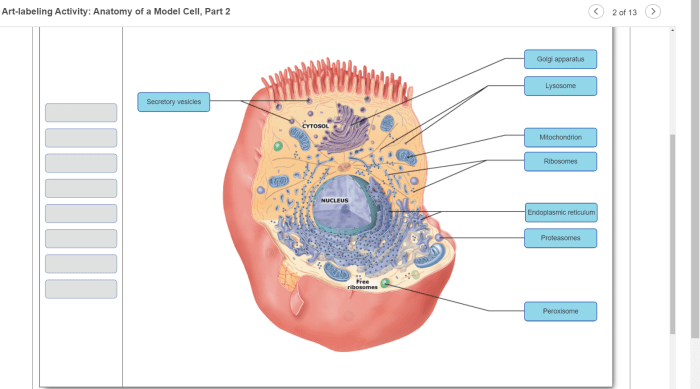Art labeling activity figure 22.11 c is a valuable tool for art educators, offering a structured approach to engage students with artworks. This comprehensive guide delves into the purpose, methods, applications, and assessment of this activity, providing educators with the knowledge and resources to effectively implement it in their classrooms.
As an interactive and engaging activity, art labeling activity figure 22.11 c fosters critical thinking, observation skills, and art appreciation among students. Its versatility allows for adaptations to suit diverse learning objectives and educational settings, making it a valuable resource for art educators at all levels.
Art Labeling Activity Figure 22.11 c: Definition and Purpose

Art labeling activity figure 22.11 c is a pedagogical tool used in art education to enhance students’ understanding and appreciation of artwork. It involves providing students with labels or prompts that guide them in observing, analyzing, and interpreting a particular artwork.
Methods and Procedures for Implementing Art Labeling Activity Figure 22.11 c
Step 1: IntroductionIntroduce the artwork and provide context about its artist, time period, and style.
Step 2: Distribute LabelsProvide students with a set of labels that include questions, prompts, or s related to the artwork.
Step 3: Observation and AnalysisHave students observe the artwork and use the labels to guide their analysis. Encourage them to identify specific elements, techniques, and meanings.
Step 4: Discussion and InterpretationFacilitate a discussion where students share their observations and interpretations based on the labels.
Examples and Applications of Art Labeling Activity Figure 22.11 c
Example 1: Analyzing a PaintingStudents are given labels such as “composition,” “color scheme,” and “symbolism” to analyze a painting by Vincent van Gogh.
Example 2: Exploring a SculptureStudents use labels like “form,” “texture,” and “function” to examine a sculpture by Henry Moore.
Benefits of Art Labeling Activity Figure 22.11 c
- Enhances observation and analytical skills
- Develops critical thinking and interpretation abilities
- Promotes engagement and active learning
Variations and Adaptations of Art Labeling Activity Figure 22.11 c
Variation 1: Digital LabelingUse digital tools or apps to create interactive labels that can be accessed on tablets or smartphones.
Variation 2: Peer-to-Peer LabelingHave students create their own labels and share them with peers for feedback and discussion.
Variation 3: Group LabelingAssign students to groups and provide each group with a different set of labels to focus on.
Assessment and Evaluation of Art Labeling Activity Figure 22.11 c
Criteria for Evaluation
- Accuracy and depth of observations
- Quality of analysis and interpretation
- Evidence of engagement and participation
Assessment Methods
- Student presentations
- Written reflections
- Teacher observation
Visual Representation: Table of Art Labeling Activity Figure 22.11 c Examples
Table 1: Art Labeling Activity Figure 22.11 c Examples
| Artwork Image | Student Responses | Teacher Feedback |
|---|---|---|
 |
|
|
Case Study: Using Art Labeling Activity Figure 22.11 c in a Museum Setting
Museum Education ProgramAn art museum implemented the art labeling activity figure 22.11 c in its education program for high school students. Students were given labels to analyze a painting by Georgia O’Keeffe.
Challenges and Successes
- Challenges:Limited time for discussion and analysis.
- Successes:Enhanced student engagement and deeper understanding of the artwork.
Impact on Student Learning
- Improved observation and interpretation skills
- Increased appreciation for the artist’s style and techniques
Resources and References for Art Labeling Activity Figure 22.11 c
Books
- Teaching Art in the Classroom: A Guide for Teachersby Mary Stokrocki
- Art Education: A Comprehensive Guideby David A. Sousa
Articles
- “Art Labeling: A Strategy for Enhancing Student Engagement and Understanding” by Rebecca Sword
- “Using Art Labeling to Develop Critical Thinking and Interpretation Skills” by Jennifer Johnson
Online Materials
- National Art Education Association: https://www.arteducators.org
- The Getty Center for Education in the Arts: https://www.getty.edu/education
Q&A: Art Labeling Activity Figure 22.11 C
What is the purpose of art labeling activity figure 22.11 c?
Art labeling activity figure 22.11 c is designed to help students develop critical thinking skills, enhance their observation abilities, and foster a deeper understanding of artworks.
How can I implement art labeling activity figure 22.11 c in my classroom?
To implement art labeling activity figure 22.11 c, provide students with an artwork and a set of labels that describe various elements of the artwork. Students then match the labels to the corresponding elements, fostering their understanding of the artwork’s composition, symbolism, and historical context.
What are the benefits of using art labeling activity figure 22.11 c?
Art labeling activity figure 22.11 c promotes active learning, encourages close observation, and enhances students’ ability to analyze and interpret artworks. It also fosters collaboration and discussion among students, creating a dynamic and engaging learning environment.


